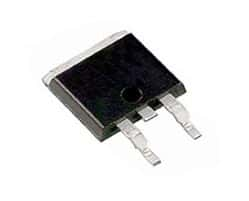Modern electronic devices depend on electronic transistors. Although transistors control the flow of electricity precisely, in the process, they also generate heat. So far, there was not much control over the amount of heat transistors generated during operation—it depended on the efficiency of the device—devices with higher efficiency generated lower amounts of heat. Now, using a solid-state thermal transistor, it is possible to use an electric field to control the flow of heat through electronic devices.
The new device, the thermal transistor, was developed by researchers at the University of California, Los Angeles. They published their study in Science, demonstrating the capabilities of the new technology. The lead author of the study explained the process as very challenging, as, for a long time, scientists and engineers wanted to control heat transfer as easily as they could control current flow.
So far, engineers cooled electronics with heat sinks. They used passive heat sinks to draw excess heat away from the electronic device to keep it cool. Although many have tried active approaches to thermal management, these mostly rely on moving parts or fluids. They can take typically from minutes to hours to ramp up or down, depending on the thermal conductivity of the material. On the other hand, using thermal transistors, the researchers were able to actively modulate the heat flow with higher precision and speed. The higher rate of cooling or heating makes thermal transistors a promising option for thermal management in electronic devices.
Similar to the working of an electronic transistor, the thermal transistor uses electric fields to modulate its channel conductance. However, in this case, the conductance is thermal, rather than electrical. Researchers engineered a thin film of molecules in the form of a cage to act as the transistor’s channel. They then applied an electric field, making the molecular bonds stronger within the film. This, in turn, increased its thermal conductance.
As the film was only a single molecule thick, the researchers could attain maximum change in conductivity. The most astonishing feature of this technology was the speed at which the change in conductivity occurred. The researchers were able to go up to a frequency of 1 MHz and above—this was several times faster than that achieved by other heat management systems.
Other types of thermal switches typically control heat flow through molecular motion. However, compared to the motion of electrons, molecular motion is far slower. The use of electrical fields allowed the researchers to increase the speed of electrons in the switch from mHz to MHz frequencies.
Another difference between molecular and electron motion is that the former cannot create a large enough difference in thermal conduction between the on and off states of the transistor. However, with electron motion, the difference achieved can be as high as 13 times, an enormous figure, both in speed and magnitude.
Because of this improvement, the device assumes an important status for cooling processors. Being small, the transistors use only a tiny amount of power to control the heat flow. Another advantage is that it is possible to integrate many thermal transistors on the same chip.

 Although powerFETs or power Field Effect
Although powerFETs or power Field Effect